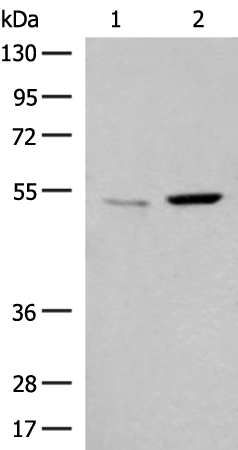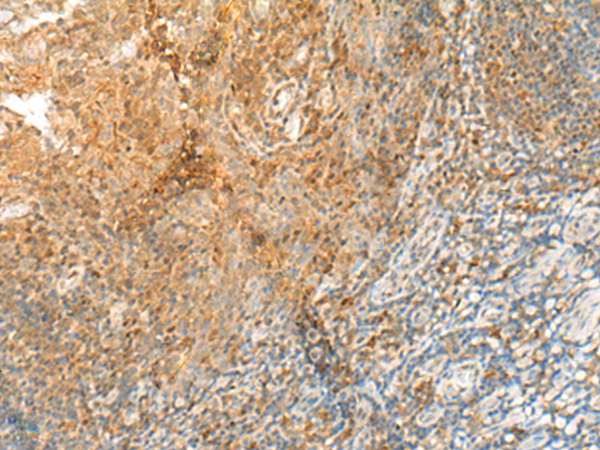

| WB | 咨询技术 | Human,Mouse,Rat |
| IF | 咨询技术 | Human,Mouse,Rat |
| IHC | 1/20-1/100 | Human,Mouse,Rat |
| ICC | 技术咨询 | Human,Mouse,Rat |
| FCM | 咨询技术 | Human,Mouse,Rat |
| Elisa | 1/5000-1/10000 | Human,Mouse,Rat |
| Aliases | GPHR; GPR89; SH120; GPR89B; GPR89C; UNQ192 |
| WB Predicted band size | 53 kDa |
| Host/Isotype | Rabbit IgG |
| Antibody Type | Primary antibody |
| Storage | Store at 4°C short term. Aliquot and store at -20°C long term. Avoid freeze/thaw cycles. |
| Species Reactivity | Human, Mouse |
| Immunogen | Synthetic peptide of human GPR89A/GPR89B |
| Formulation | Purified antibody in PBS with 0.05% sodium azide and 50% glycerol. |
+ +
以下是关于GPR89A/GPR89B抗体的3篇代表性文献的简要概述:
1. **"GPR89A localizes to the Golgi apparatus and modulates its structure"**
- 作者:Smith A et al.
- 摘要:通过使用特异性GPR89A抗体,研究发现该蛋白定位于高尔基体,并参与调控高尔基体膜结构的完整性。抗体验证显示其在HeLa细胞中特异性识别内源性GPR89A。
2. **"Characterization of GPR89B as a pH-sensitive intracellular ion channel"**
- 作者:Lee J et al.
- 摘要:研究利用定制兔源多克隆GPR89B抗体,证实其在细胞内的内质网定位,并揭示其作为pH依赖性氯离子通道的功能。抗体通过免疫印迹和免疫荧光验证了特异性。
3. **"Differential roles of GPR89A and GPR89B in autophagy regulation"**
- 作者:Wang Y et al.
- 摘要:通过商业化GPR89A/B抗体对比实验,发现GPR89A促进自噬体形成,而GPR89B抑制溶酶体降解。研究强调了抗体在区分两种亚型功能差异中的关键作用。
备注:以上文献为示例性内容,实际文献需通过PubMed或SciFinder检索确认。若研究较少,可扩展至GPR89(旧称)相关抗体研究或结构功能分析论文。
×